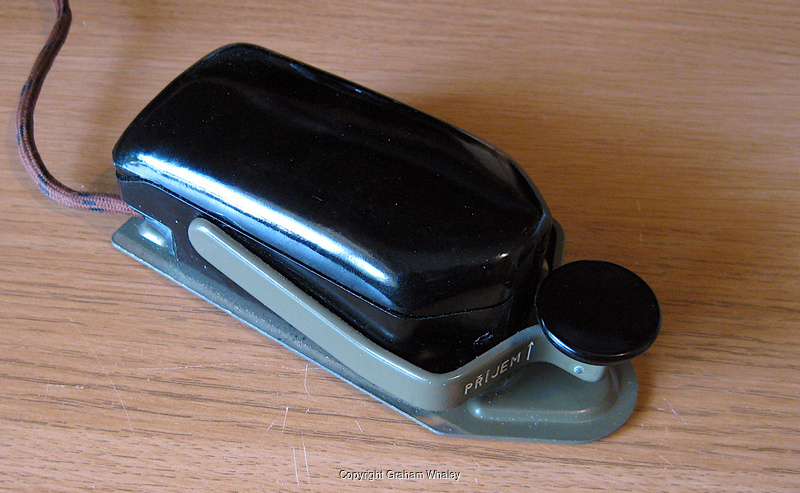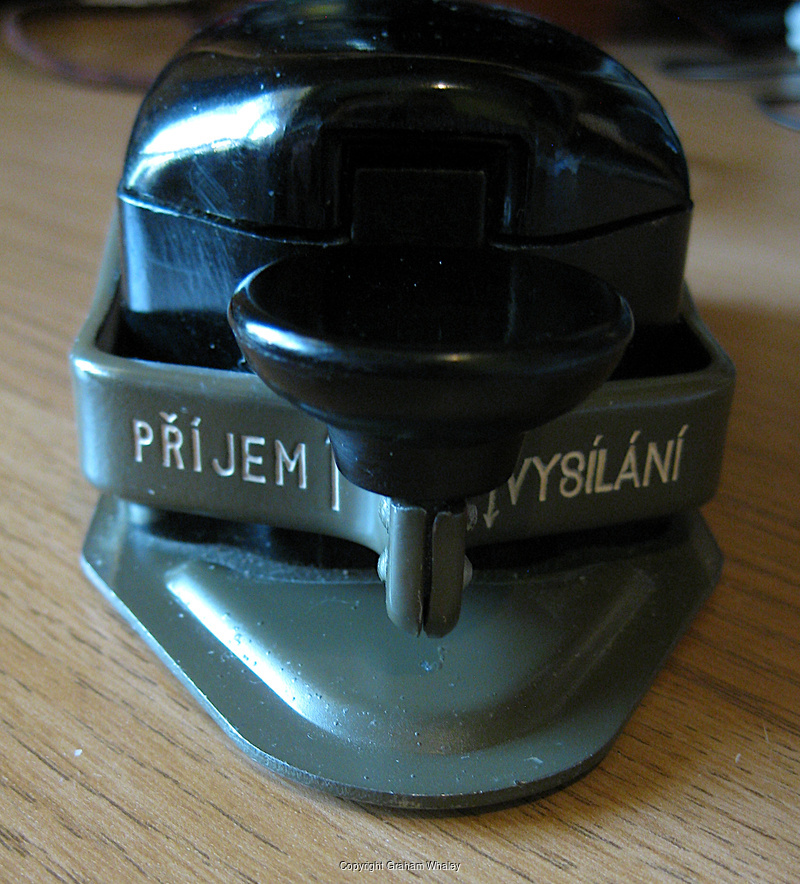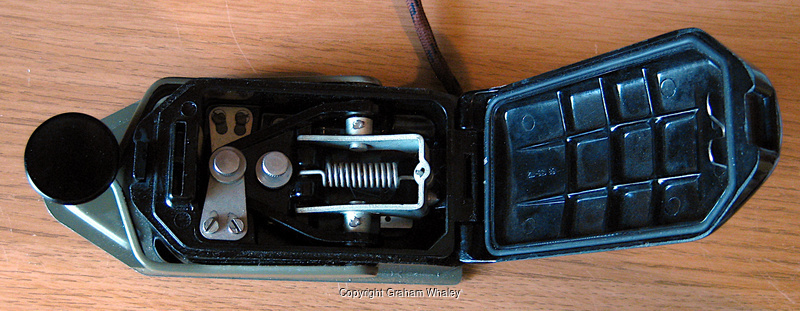
After my first key, the WT8AMP, I wanted to see if I could find a ‘softer’ key. I also felt I needed to try some other keys anyhow.
After some research the Czech army key was recommended in a number of places as a good value purchase for a beginner. I started the search, and soon one turned up…
I acquired this key from ebay, for the sum of £14.09 delivered. That was a real bargain! These keys do still turn up in pretty good condition on ebay, hovering around the £30+ mark from what I see. If I see one turn up cheap-ish, I’ll probably snap up another.
I should clarify that you might see this key descriped under a number of different names. Being called a ‘Czech’ key is probably the defining common, but other than that, the key itself does not appear to have a serial number or type imprinted on it, and thus possibly the multitude of names it is listed under. They include afaict:
The name ‘Prijem’ comes from that word being printed on the front of the main key arm, along with the word ‘Vysilani’. They mean ‘receive’ and ‘transmit’ in Czech !. Yes, if you lift the keying arm up then there is an extra switch inside the key body that you can use I believe!.
RM31 seems to actually be the name of a transmitter the key was used with, and not the key itself - maybe.
One of the best pages to find more information is from the UV3R sellers site. Although all the keys are sold out, there is a lot of useful information there.
There used to be a UK reseller as well afaict, but with supplies of these NOS keys dried (that is, now I think you can only really get them second hand), those web pages appear to have deceased.
There are some nice photos on this PA3EGH page including the original wax paper wrapper. You can also see the optional leg strap and how the key slides into it. My key didn’t come with a leg strap.
You can read the eham reviews here. The one negative review I can see complains about the action being mushy - but, well, for me right now I sort of like that.
There are plenty of pictures in the above links, but here is my key:



The internals are interesting - this key seems to use a different mechanical action to most key designs, which I think contributes to its action.
As you can see, the key comes enclosed in a case that seals with an o-ring - these keys probably classify as ‘flame proof’. That also helps reduce noise during use.
If you want to open the case, push the key arm up, and then depress the little lever/button you find under it - and then flip the lid up. For me this takes a bit of finger twiddling as the arm tries to squash the finger lifting the lid, but it works.
Opening the case also disconnects the key I believe - another ‘flameproof’ safety feature.
You can see the adjusters for gap and tension there as well. And that big spring - iirc, it is not so much the tension spring, but it places a constant tension on the arm bearings, thus removing any play.
Well, my key pretty much came as new. No cleaning up required at all. It even came with a 3.5mm plug on it. I stuck some very small rubber feet on the bottom (those little buffers you get for kitchen cupboard doors, of which I had some laying around), and adjusted the gap and tension to my liking. Voila!
I like this key. I like the action. As of right now this is the key I’m using for my practice. I have some other keys I also like, but until I get those nicely cleaned up and mounted for a fair comparison, then this is the key wired to my practice TRX.